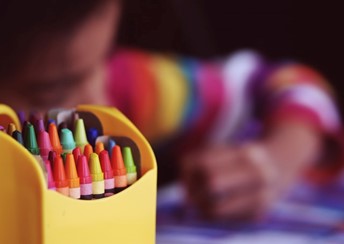Colby Russell Robbins of Tennessee is a Certified Financial Planner and contributes to publications covering early childhood education news. In the following article Colby Russell Robbins discusses how new tech is being incorporated into the classroom for young learners.
Colby Russell Robbins of Tennessee explains that recent technological advancements have pushed the boundaries of what’s possible in education. Even the youngest of students are now benefiting from interactive digital environments, robotics, wearable technologies, and educational content disguised as mobile phone apps. Thanks to these updates, early childhood educators have been better able to capture the imaginations of their classrooms and encourage learning.
Today’s classrooms are nothing like what they were just a few decades ago explains Colby Robbins. Let’s explore some of the latest technologies being implemented to revolutionize early childhood education and discuss how these changes are helping teachers deliver more effective lessons to the youngest learners.
Interactive AR and VR Interfaces
Colby Russell Robbins of Tennessee says one of the most innovative emerging technologies to find its way into early childhood education is the use of
augmented reality (AR) and virtual reality (VR). While VR headsets like the Oculus Rift and HTC Vive are still too expensive for most schools, there are a number of affordable AR devices such as Google Cardboard and Merge Cube that are being used in classrooms.
These devices allow students to view and interact with digital content in a way that feels natural and engaging. For example, Colby Russell Robbins of Tennessee says a student learning about planets in the solar system can use an AR headset to view and manipulate a 3D model of the planets.
This type of hands-on learning has been shown to be more effective than traditional methods, such as reading a textbook or listening to a lecture and it’s already encouraging young learners to get involved in lessons.
Wearable Technologies
Wearable technologies, such as smartwatches and fitness trackers, are also being used in early childhood education. Colby Russell Robbins of Tennessee reports that these devices can be used to track a child’s activity level and engagement in class. They can also be used to deliver targeted content to individual students.
For example, a child who is struggling with math may be given a smartwatch that delivers extra practice problems and reminders to stay on task while a child who is excelling in math may be given a smartwatch that allows them to access more challenging content.
These technologies are also being used in physical education classes to track a child’s activity level and progress. This data can then be used to adjust the difficulty of a child’s exercise routine or to help identify which students may need more assistance.
 Educational Apps
Educational Apps
Mobile phone apps are also being used to deliver educational content to students, according to Colby Russell Robbins. While there are a number of educational apps available, many of them are not appropriate for young children. However, there are a number of apps that are specifically designed for early childhood education.
For example, the app Peekaboo Barn uses animated animals and familiar farm sounds to teach young children about animals, their sounds, and the names of the body parts. The app also includes a number of interactive activities, such as matching and memory games, to keep children engaged.
Colby Russell Robbins of Tennessee says this is especially useful in pre-K, kindergarten, and lower primary classes where teachers often struggle to keep their students engaged throughout the lesson. By providing what appears to be a video game, teachers can slip information into what is otherwise a fun and interactive classroom activity.
Robotic Toys
Colby Russell Robbins of Tennessee notes that Robotics and robotic-type toys are another type of modern technology that is progressively finding its use in early childhood education. These toys are used to engage and educate young students while helping to teach essential information about problem-solving, teamwork, and other crucial life skills.
Robots such as Sphero and Dash & Dot are already being used in classrooms to teach coding, engineering, and problem-solving to young students. These robots can be programmed to perform a variety of tasks and can be used in a number of different lesson plans. For example, a class of students may be tasked with programming a robot to navigate through a maze.
This activity requires students to work together to find a solution and helps them develop important coding and problem-solving skills. Colby Russell Robbins of Tennessee says while these may seem like advanced lessons for young learners, by introducing lower primary students to the
basic concepts of coding and computer technology, they can quickly build a foundation that will serve them well later in life.
Final Thoughts
The examples Colby Russell Robbins of Tennessee shared here are just a few of the ways that advanced technologies are being used to benefit early childhood education. By engaging students and presenting interactive content, technology has helped teachers reach young learners. As technology continues to evolve, we can expect to see even more innovative and effective ways to deliver lessons to young students.
